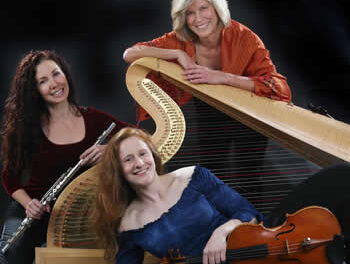Giuseppe Verdi: Il trovatore. The Royal Opera, Carlo Rizzi conductor. BBC Opus Arte OA 0849 D
When operatic DVDs first hit the market, we were eager to add a whole new dimension to our music library, one that would comprise spectacular digital imagery and sound. Unfortunately, the performance quality of these recordings has frequently not lived up to expectations. Most early DVDs of operas are remasterings of analog televised or archival performances whose only advantage is the English subtitles. CDs – even remastered ones – still rule.
It is, therefore, with great pleasure that we welcome a new series of BBC Opus Arte digital recordings of both the opera and ballet repertory. These DVDs are distributed by Naxos America who, sadly, rarely announce in advance what’s on the docket. In any case, one of the first of the series, Verdi’s Il trovatore , is a valuable and high quality addition to any collection. One of Verdi’s more absurd plots, parodied on at least three occasions by Gilbert and Sullivan, Trovatore is primarily beloved for its music and the individual numbers that demand significant dramatic, as well as purely vocal, talent of the cast.
The live Covent Garden performance, headed up by Chilean soprano Verónica Villarroel as Leonora, José Cura as Manrico, Dmitri Hvorostovsky as Count de Luna and Yvonne Naef as Azucena, is extremely well sung and acted. One of Verdi’s groupies floated a spurious statement that originally Verdi intended to call the opera “Azucena,” since it is the gypsy’s obsession with avenging the execution of her mother as a witch that renders the plot more than just another tenor-soprano-baritone triangle. In that spirit, Naef, with her magnificent rich mezzo-soprano and her ability to take the character seriously, is the star of stars in this production.
Villarroel is the weakest of the principals, especially in the first act in which she doesn’t yet have a dramatic crisis to get her revved up. Her voice also has a slightly metallic edge to it that may, in fact, be the result of the sound engineering. No harshness, however, was heard from Naef, Hvorostovsky or Cura.
The set is appropriately gloomy, although a little more light on the scenery would have helped prevent the singers from appearing as if they were singing out of a black hole. The only strange set was in the convent scene, in which Leonora intends to make good on her threat to become a nun if she cannot marry Manrico. For some reason the convent looks like a European railway station of the late nineteenth century. Oh yes, there were no anvils visible on stage for the “Anvil Chorus.”
Of course, it is now mandatory that DVDs come with extra features, usually interviews with the singers and production staff, who respectively discuss their role interpretations and costume and set concepts. Trovatore is one of Verdi’s choral operas and in this case, the one, rather uninformative interview with the cast in piano rehearsal was superseded by a second feature illustrating the dueling technique used by chorus and principals alike for this production. Director Elaine Padmore hired fight arranger Williams Hobbs to drill the men in Schläger fighting, a sword technique used primarily by German students and the usual cause of the infamous Heidelberg facial scars. The technique is extremely precise and Hobbs stylized it so that it was actually choreographed in time to the music. However hackneyed Trovatore may be, viewers still come away with some new insights.
Then there’s the booklet. It’s been bad enough that CD liner notes are generally cursory at best and in six-point type. Now, with the possibility of being more inclusive and expansive, the producers obviously skimped on the accompanying literature, which included the breakdown of the scenes into tracks, the plot and mini-biographies of the cast. No background information on Verdi, his life, music or source material. And no libretto.
Nevertheless, as operatic DVDs go, this production is certainly several cuts above the average in both sound quality and artistry for opera on video.











